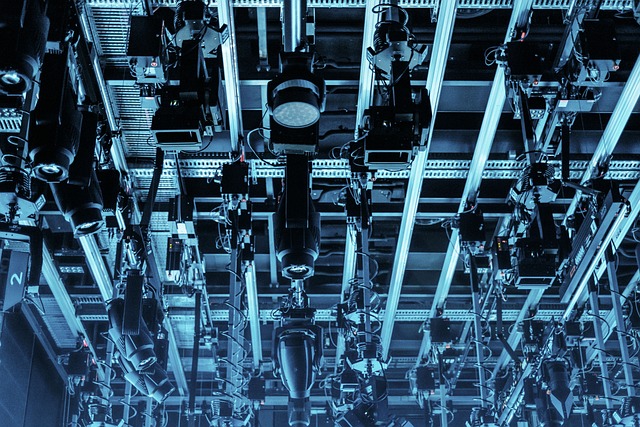Advanced RF Microneedling is a groundbreaking skincare treatment combining radiofrequency energy with microneedling to stimulate collagen production and address acne scars, offering improved texture and reduced visibility for atrophic and hyperpigmented scars. While side effects like temporary redness or discomfort may occur, multiple sessions with proper aftercare yield consistent, predictable results with less downtime compared to traditional treatments like chemical peels and laser therapy. Consulting a dermatologist is essential for personalized guidance and managing rare adverse reactions.
Acne scars can leave lasting marks on the skin, impacting self-esteem and confidence. Understanding effective treatment options is crucial for those seeking smoother, more even complexions. This article delves into the evolution of acne scar treatments, focusing on the rise of Advanced RF Microneedling as a game-changer in dermatology. We explore its mechanics, advantages over traditional methods like chemical peels and laser therapy, and help readers navigate the clinical decision-making process for the best scar reduction outcomes.
Understanding Acne Scar Formation: A Basic Overview

Acne scars form when the skin’s collagen and elastin fibers are damaged during an acne flare-up. The skin’s natural healing process involves rebuilding this structural support, but in some cases, this repair mechanism can result in scar tissue formation. There are several types of acne scars, including atrophic scars (depressed scars), hyperpigmented scars, and keloidal scars. Each type has distinct characteristics and requires different treatment approaches.
Advanced RF Microneedling is a state-of-the-art technique that has gained popularity in acne scar treatments. It involves using fine, sterilized needles to create controlled micro-injuries in the skin, stimulating collagen production and enhancing the body’s natural healing process. This method offers a more precise and targeted approach compared to traditional methods, potentially providing better results for atrophic and hyperpigmented scars.
Introduction to RF (Radiofrequency) Microneedling for Acne Scars

Advanced RF Microneedling is a cutting-edge treatment that has gained significant attention in the skincare industry for its effectiveness in addressing acne scars. This innovative procedure utilizes radiofrequency energy combined with microneedling to stimulate collagen production and promote skin rejuvenation. By creating tiny, controlled injuries in the skin, it triggers a natural healing process, resulting in smoother, more even-toned skin.
The advanced RF Microneedling technique offers a non-invasive way to improve the appearance of atrophic acne scars, which are characterized by deep pits or indentations on the skin’s surface. Unlike traditional treatments that focus on superficial changes, this modern approach goes deeper, reaching the dermis layer where collagen and elastin fibers play a crucial role in skin structure and elasticity. This technology ensures more precise and controlled results, making it an appealing option for those seeking long-lasting solutions for their acne scarred skin.
The Mechanics of RF Technology in Skin Treatment

Radiofrequency (RF) technology has emerged as a game-changer in skin treatment, offering advanced solutions for various dermatological concerns, including acne scars. At its core, RF works by using controlled amounts of radio waves to penetrate the skin’s deeper layers. This process stimulates collagen production and tightens skin fibers, leading to improved texture and reduced scar visibility. Advanced RF Microneedling is a precision technique that enhances this effect by combining tiny needles with RF energy. The needles create micro-channels in the epidermis, allowing the RF waves to target specific areas more effectively. This advanced approach not only accelerates collagen synthesis but also facilitates the delivery of topical treatments for enhanced results.
Traditional Acne Scar Treatment Methods: An Analysis

Traditional acne scar treatments have long relied on techniques such as chemical peels, laser therapy, and subcision. While effective in many cases, these methods often come with side effects and may not be suitable for everyone. Chemical peels use strong acids to exfoliate the skin, improving texture and reducing scarring, but can cause redness, peeling, and sensitivity. Laser treatments, including fractional laser resurfacing, offer precise targeting of damaged skin but may result in downtime, discomfort, and potential hyperpigmentation. Subcision involves inserting a small needle underneath acne scars to break up fibrous tissue, but it’s an invasive procedure with a risk of infection and scarring itself.
Compared to these traditional methods, Advanced RF Microneedling emerges as a promising alternative. This innovative technique utilizes radiofrequency energy in conjunction with microneedling, creating controlled micro-injuries in the skin that stimulate collagen production. Unlike lasers, which can be aggressive, RF Microneedling offers a gentler approach while still achieving significant improvements in scar appearance and skin texture. Its non-ablative nature means there’s typically less downtime and a lower risk of complications, making it an appealing choice for those seeking effective yet conservative acne scar treatment.
Comparing RF Microneedling with Chemical Peels and Laser Therapy

In the realm of acne scar treatments, Advanced RF Microneedling stands out as a game-changer, offering unique benefits that set it apart from traditional methods like chemical peels and laser therapy. While chemical peels and laser treatments have long been popular for their ability to improve skin texture and reduce scarring, RF Microneedling takes this a step further by promoting collagen production through controlled micro-injury. This innovative approach not only enhances the appearance of acne scars but also helps in revitalizing overall skin health.
Comparatively, chemical peels rely on chemicals to exfoliate the skin, while laser therapy uses intense light energy. In contrast, RF Microneedling utilizes radiofrequency energy delivered through fine needles to stimulate collagen and elastin production. This method is often considered more precise and effective for targeted scar treatment, as it can be tailored to different skin types and depths of scarring. Moreover, RF Microneedling offers a relatively shorter recovery time compared to laser treatments, making it a preferred choice for those seeking swift results without extensive downtime.
Advantages of Advanced RF Microneedling Over Conventional Methods

Advanced RF Microneedling offers several advantages over conventional acne scar treatment methods. One of its key benefits is enhanced collagen stimulation. By combining radiofrequency energy with microneedling, this technology promotes the production of new, healthy collagen fibers, which are essential for skin reconstruction and improving the appearance of scars. This process not only helps to fill in depressed acne scars but also enhances skin texture and overall skin elasticity.
Another advantage is its precision and effectiveness. Advanced RF Microneedling allows for targeted treatment, ensuring that energy is delivered precisely where it’s needed most. This results in more consistent and predictable outcomes compared to traditional methods. Moreover, the non-invasive nature of RF Microneedling reduces recovery time and discomfort, making it a preferred choice for individuals seeking effective yet gentle treatments for acne scars.
Potential Side Effects and Precautions for RF Acne Scar Treatments

RF (Radio Frequency) acne scar treatments, particularly advanced RF Microneedling, offer a promising solution for skin rejuvenation. However, like any procedure, it’s crucial to be aware of potential side effects and take necessary precautions. One common concern is temporary redness, swelling, or discomfort at the treatment site, which usually subsides within a few days. In rare cases, patients might experience bruising or skin irritation, requiring careful monitoring by a qualified dermatologist.
It’s essential for individuals considering RF treatments to consult with a healthcare professional who can provide personalized advice based on their skin condition and medical history. They should also understand that multiple sessions may be necessary to achieve optimal results, each separated by appropriate healing time. Additionally, proper aftercare, including the use of recommended skincare products and avoiding strenuous activities or direct sunlight, is vital to ensure the best possible outcomes and minimize any adverse reactions.
Choosing the Right Approach: RF vs Traditional, A Clinical Decision

Choosing the Right Approach: RF vs Traditional
When it comes to treating acne scars, dermatologists and aesthetic professionals often grapple with a crucial decision—selecting between Radiofrequency (RF) and traditional treatments. Both methods have their merits and are considered effective in various scenarios, making it a clinical judgment call based on individual patient needs. Advanced RF Microneedling, for instance, has gained traction as an innovative approach that combines the power of microneedling with precise RF energy delivery. This technique offers potential benefits like enhanced collagen stimulation and improved skin texture, making it suitable for deeper scar treatments.
However, traditional methods such as chemical peels, laser resurfacing, or fillers still hold their ground in certain cases. The choice often depends on factors like the depth and severity of scars, patient preferences, and the expertise available at the clinic. A qualified dermatologist will assess these variables to recommend the most appropriate treatment—whether it’s the advanced technology of RF Microneedling or a more conventional approach—ensuring optimal results for scar reduction and improved skin quality.
